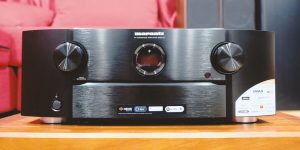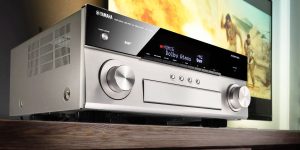You must have heard about bi-wiring speakers – when separate cables run to their woofer and tweeter units. Bi-amping is similar but involves separating signals even further by sending the low-frequency and high-frequency signals to speakers from two different amplifiers. To make this happen, you will need a bi-amp receiver.
This type of receiver has two amplifiers in one chassis and a set of terminals on the back, which you can set up to send the signal from the second amplifier to your front speakers. Usually, these are the same terminals that are used for surround or height speakers, so when you use your receiver in the bi-amp mode, you will not be able to use these speakers.
What are the advantages of using a bi-amp receiver?
If you have speakers that can be bi-wired and you will use a bi-amp receiver to power them (providing the proper cabling), you will get better sound in most cases. Why? Because the receiver will send separate signals to the high and low-frequency drivers of each speaker. In this way, your speakers will get more power, and they will sound clearer with less distortion. Bi-amping also helps reduce electrical interference between the signals sent to each driver.

What else do you need to bi-amp your speakers?
You need to remove the jumpers that connect the woofer and tweeter terminals on your speakers. Usually, they are brackets, rods, or wires, and it is enough to loosen binding posts to take them off.
If your speakers don’t have separate terminals for the low and high frequencies, setting up a bi-amp configuration will not be possible.
Once you have connected the speakers, it is time to set up your receiver. To do this, you need to go into the menu and select the bi-amp mode. If you are not sure, read the manual. You can find the bi-amp mode under the “Speaker Configuration” menu in your receiver. When all this is done right, you can sit back and enjoy your bi-amped system.
Is it sure that you will get better sound using a bi-amp receiver?
This may not always be the case. There are other factors that can affect the final sound, such as the impedance of your speakers, the distance between drivers and receivers, how long each cable is, the geometry of your room, and so on.
In many cases, you can get better sound simply by bi-wiring the speakers. So the most important advice is that you should test various configurations and decide which works best with your setup.
We are supported by our audience. When you purchase through links on our site, we may earn an affiliate commission at no extra cost to you.
Our newsletter
* We will never send you spam or share your email with third parties















